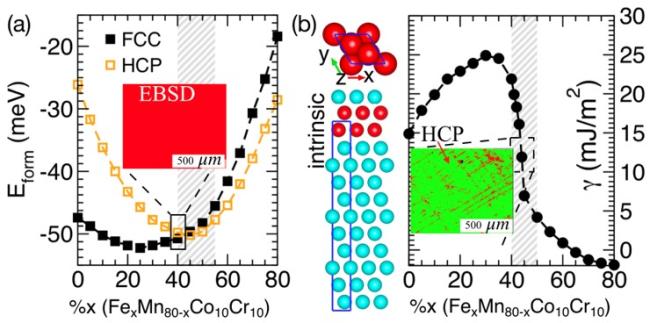Scientific Achievement
Novel, theory-guided design identified origins for transformation- and twinning-induced plasticity (TRIP/TWIP) to tune the strength and ductility in austenitic high-entropy alloys (HEAs), as was also confirmed experimentally.
Significance and Impact
Tuning single-phase HEAs properties enables control of strength-ductility properties for the design of stronger and economical materials.
Research Details
- DFT methods integrated with full configurational averaging predicts average properties enabling theory-guided design for any complex solid-solution alloy with structural defects.
- Confirmed composition and TRIP/TWIP behavior by single-crystal measurements: electron microscopy, selective-area diffraction, and electron-backscattered diffraction.
“Martensitic transformation in FexMn80-xCr10Co10 High-Entropy Alloy,” P. Singh*, S. Picak, A. Sharma, Y.I. Chumlyakov, R. Arroyave, I. Karaman, and Duane D. Johnson*, Physical Review Letters 127, 115704 (2021).

